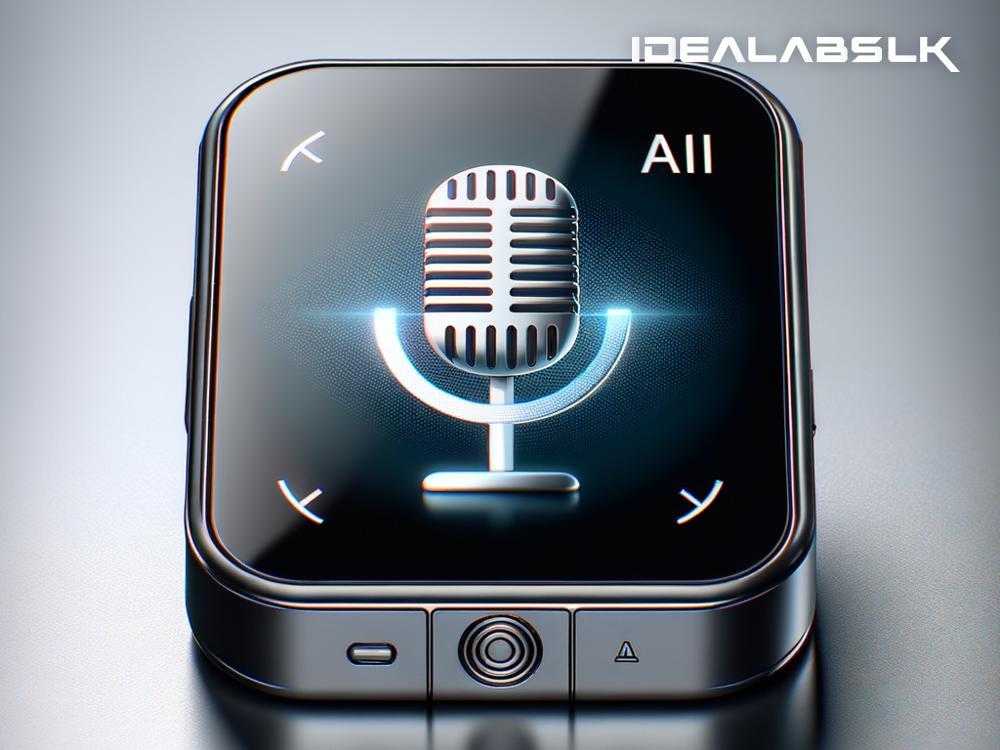How AI Powers Voice-to-Text Transcription in Tiny Gadgets
In today's fast-paced world, technology has become our constant companion, aiding us in our daily tasks and keeping us connected. One of the most fascinating advancements is how artificial intelligence (AI) has streamlined complex processes, making our gadgets smarter and more efficient. A prime example of this is the seamless conversion of voice to text right in our compact devices, thanks to AI. Ever spoken to your phone and watched it effortlessly jot down your words? That's AI in action, and it's genuinely revolutionizing how we interact with our gadgets.
The Magic Behind Voice-to-Text Transcription
At its core, voice-to-text transcription involves capturing spoken language and converting it into written text. This might sound simple, but it's a complex task that involves understanding languages, accents, intonations, and even context. Enter AI, with its ability to learn, adapt, and improve over time. Through a process called machine learning, AI algorithms are trained on vast datasets of spoken language so they can accurately recognize and transcribe speech. This is why your smartphone can understand you whether you’re asking for the weather or dictating a text message to a friend.
Making Compact Gadgets Smarter
The true marvel lies in how this powerful technology has been encapsulated into the tiny gadgets we carry around every day. Whether it's a smartphone, a smartwatch, or wireless earbuds, they all come equipped with microphones that capture your voice and AI-powered software that does the heavy lifting of transcription. This wasn't always possible. Early attempts at voice recognition required powerful computers and struggled with accuracy. However, advancements in AI and the miniaturization of technology have made it possible to fit this capability into our palm-sized devices.
The Role of AI
AI doesn't just transcribe what it hears; it understands context, learns from its mistakes, and even gets better over time. This adaptability is key to handling the diverse ways people speak, including different accents, speech impediments, and background noises. For example, if the AI consistently misinterprets a word you say, it can learn from the correction and improve its accuracy for future attempts. This learning ability is what makes AI-powered voice-to-text not just a novelty but a genuinely useful tool.
Cloud Connectivity: A Game Changer
Another critical factor in the success of voice-to-text in compact gadgets is their connectivity to the cloud. While the device itself captures your voice, often, the heavy processing is done on powerful servers in the cloud. This allows for the transcription process to leverage more advanced AI models than what could be run on a device alone. It also means that the AI can access updates and improvements without requiring changes to the device itself, ensuring that your gadget keeps getting smarter over time.
The Impact on Our Lives
Voice-to-text technology has profound implications for our daily lives. It makes technology more accessible, allowing people who might struggle with typing or using a touch screen to interact with their devices easily. It's also a massive time saver, letting us compose messages or search the internet hands-free. Beyond convenience, it has essential applications for people with disabilities, offering an alternative way to communicate and interact with technology.
Looking Ahead
As AI technology continues to evolve, we can anticipate even more powerful and efficient voice-to-text capabilities in our gadgets. Improvements in AI algorithms will lead to faster, more accurate transcriptions, even in noisy environments. We can also expect this technology to become more personalized, learning not just from users as a whole but adapting to individual speech patterns and preferences.
In conclusion, the integration of AI-powered voice-to-text transcription in compact gadgets is a testament to the incredible progress in technology. It not just simplifies our interactions with our devices but also opens up new possibilities for accessibility and efficiency. As AI continues to learn and grow, the future of voice-to-text looks promising, ensuring that our gadgets will keep getting smarter, more intuitive, and more indispensable to our daily lives.

